
AstroRIG
AstroRIG was our final thesis project in college. We were a group of 3 people who were interested to explore the topic "Games for Cognitive development in Children". We started by understanding the different conditions and reasons for cognitive impairments in children and that is how we landed onto ADHD as our topic. AstroRIG is an intervention to help therapists plan, conduct and monitor therapy sessions for children with ADHD. "Spacewalk" is an example game within AstroRIG which can test a child's sustained attention and patience levels.
Associated with : MIT World Peace University, Pune
Guide : Prof. Sai Ojha
Team : Nidhi Kothari, Vaishnavi Joshi, Gautami Kulkarni
Research, Ideation, Wire framing, Prototyping
AstroRIG Overview
AstroRIG, being designed on a master-slave concept, has 2 sides- therapists’ and patient’s (child). It is designed to be played on a tablet for both sides. AstroRIG’s primary functions include:
-
It helps therapist set games (game duration/difficulty level/cues) for response inhibition EF training for ADHD children aged 6-12yrs.
-
It helps therapist track the patient’s progress with a set of metrics and schedule games for future sessions.
-
It has a 2-player mode called “play along” which helps in rapport building between the therapist and patient.
-
It is a serious game backed with scientifically approved metrics of the Conners CPT.
Games within AstroRIG
AstroRIG, tracks progress with the help of metrics used Conners CPT 3 (Continuous Performance Task)
The Conners Continuous Performance Test measures attention-related problems in individuals aged eight years and older. By indexing the respondent’s performance in areas of inattentiveness, impulsivity, sustained attention, and vigilance, the Conners CPT 3 can aid in the assessment of ADHD and other neurological conditions related to attention.
The following metrics can be tracked in AstroRIG:
-
Detectability
-
Error type- Omission rate
-
Reaction time- HRT (Hit Reaction Time) , HRT SD, Variability
Background
ADHD is one of the most common mental disorders affecting children. Symptoms of ADHD include inattention (not being able to keep focus), hyperactivity (excess movement that is not fitting to the setting) and impulsivity (hasty acts that occur in the moment without thought). ADHD is considered a chronic and debilitating disorder and is known to impact the individual in many aspects of their life including academic and professional achievements, interpersonal relationships, and daily functioning.
There are three main types of ADHD :
-
Inattentive
-
Hyperactive/impulsive
-
Combined

But what exactly is impaired in this condition ? - Executive functions

ADHD through out patient’s age.....

After diagnosis, treatment and behaviour therapy usually starts by the age of 6 and since we were planning to make a game, we selected 6-12 years as our age range.
We came across 2 studies (for children aged 6-13 yrs old) which emphasised on the most commonly impaired executive function amongst children and found out that response inhibition i.e self-restraint was the one. It was the highest impaired in group 1 i.e. ADHD [100 children (23-inattentive type, 32-hyperactive type, 45-combined type)] only group


Currently used tasks
-
The Stroop colour and word test- The Stroop Color and Word Test (SCWT) is a neuropsychological test extensively used for both experimental and clinical purposes. It assesses the ability to inhibit cognitive interference, which occurs when the processing of a stimulus feature affects the simultaneous processing of another attribute of the same stimulus5
-
Go/no-go task- The Go/No-go task is a simple experimental paradigm that requires participants to respond by pressing a button when they see a “go” signal, and not respond when they see the “no-go” signal. In psychology, go/no-go tests are used to measure a participant's capacity for sustained attention and response control
COGMED- AN FDA approved game for Working Memory
Cogmed Working Memory Training (CWMT) is a researched-based, systematic method for improving WM through computerised training and professional support. It has 3 product variations for JM (for preschool children), RM (for school-aged students), QM (for adults)


Problem statement
There is no intervention in treatment specifically focused on response inhibition which is one of the most commonly affected EFs in children having ADHD.
Also on the therapist’s side, as seen above, tracking usually is done manually (by observing and noting down progress) which requires zero negligence.
We aim to provide an intervention which encompasses all the above points to make the experience of therapy effortless and fun
Ideation


Response inhibition (or lack of inhibitory control) means not being able to control the actions which aren’t appropriate in a given context/situation. Inhibitory control involves inhibition at the cognitive, behavioural, emotional and motor levels:
-
Cognitive inhibitory control is the ability to control our focus and attention while having several distracting stimuli all around us.
-
Behavioural inhibitory control is the ability to control our urges to react and respond to situations when we know it would not be appropriate to do so.
-
Emotional inhibitory control is the ability to control or regulate our emotions.
-
Motor inhibitory control is the ability to control our motor behaviour, such as staying in our seat in class even though we feel bored.
These types of inhibitory control in general cause distractibility (being unable to block out unimportant distractions or visual distractions in order to focus), hyperactivity (difficulty staying on task) and impulsivity (having difficulty waiting their turn)9.
Now as closely related as these tasks seem, they indeed have 3 major aspects (which are common between them) needed to perform tasks normally:

Game design
Based on the insights from prior research, we were now exploring game mechanics which will help us track sustained and selective attention spans as well as patience levels for kids with ADHD
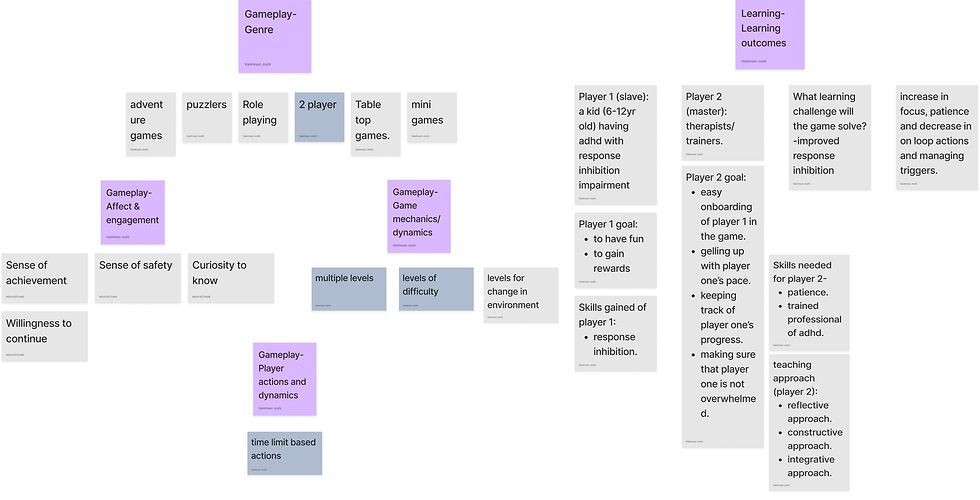
(A brainstorming snippet)
Game structure


Based on this game structure, we designed "Spacewalk"- a short game within AstroRIG to test a kids' sustained attention and patience levels.
We explored different themes but settled with Space for the following reasons

AstroRIG - Patient’s side screens
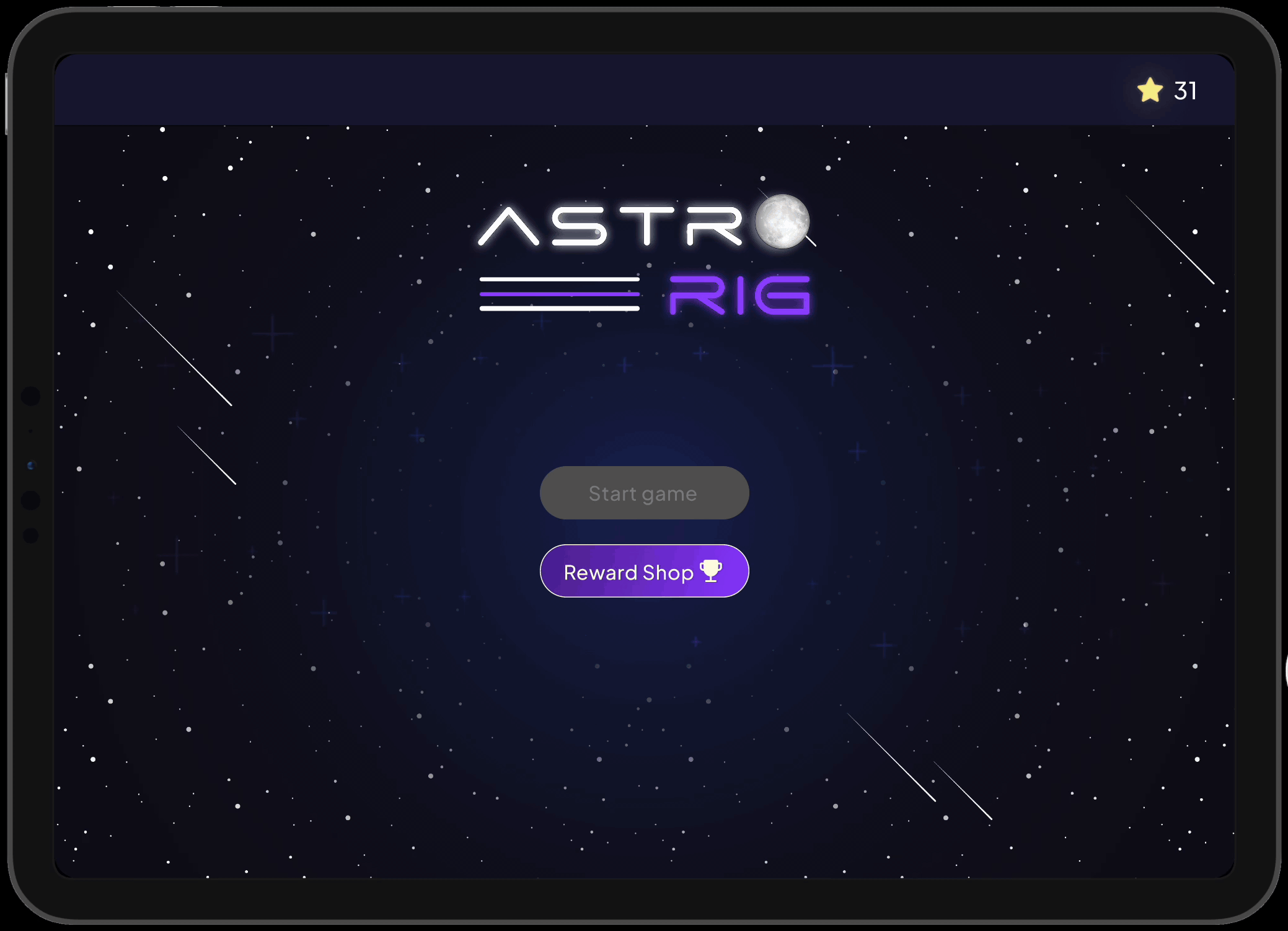
Starting the game
Patient can start the game once the therapist has set & started the game on his/her side. With the stars gained, the patient can buy assets from the Reward Shop.
%201.png)
PLAY-ALONG for rapport building
The therapist can play along with the patient and complete tasks from task list within the given time by communicating with each other.
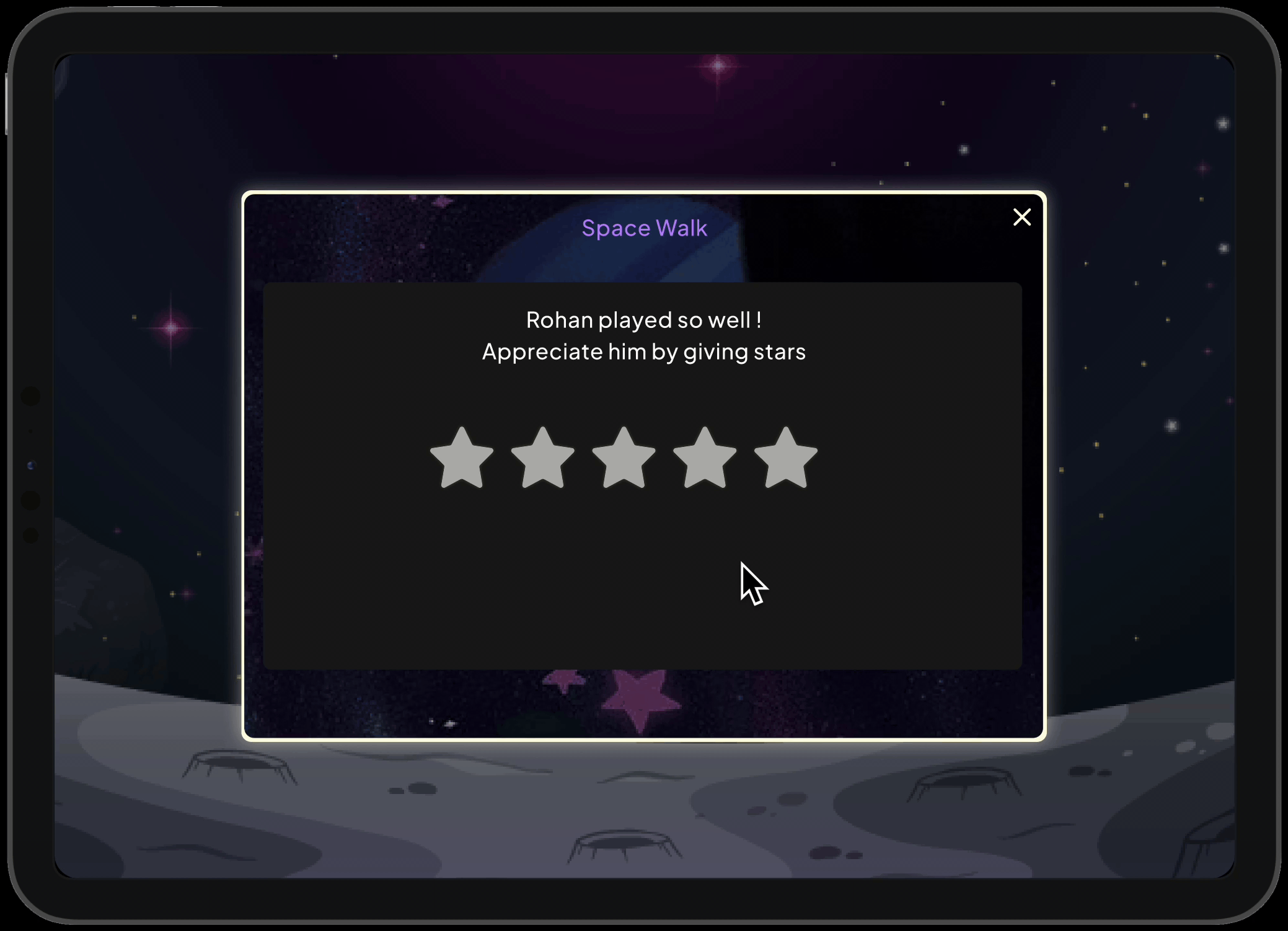
Stars by therapist
Based on the patient’s game performance the therapist can award stars.
AstroRIG- Therapist’s side screens
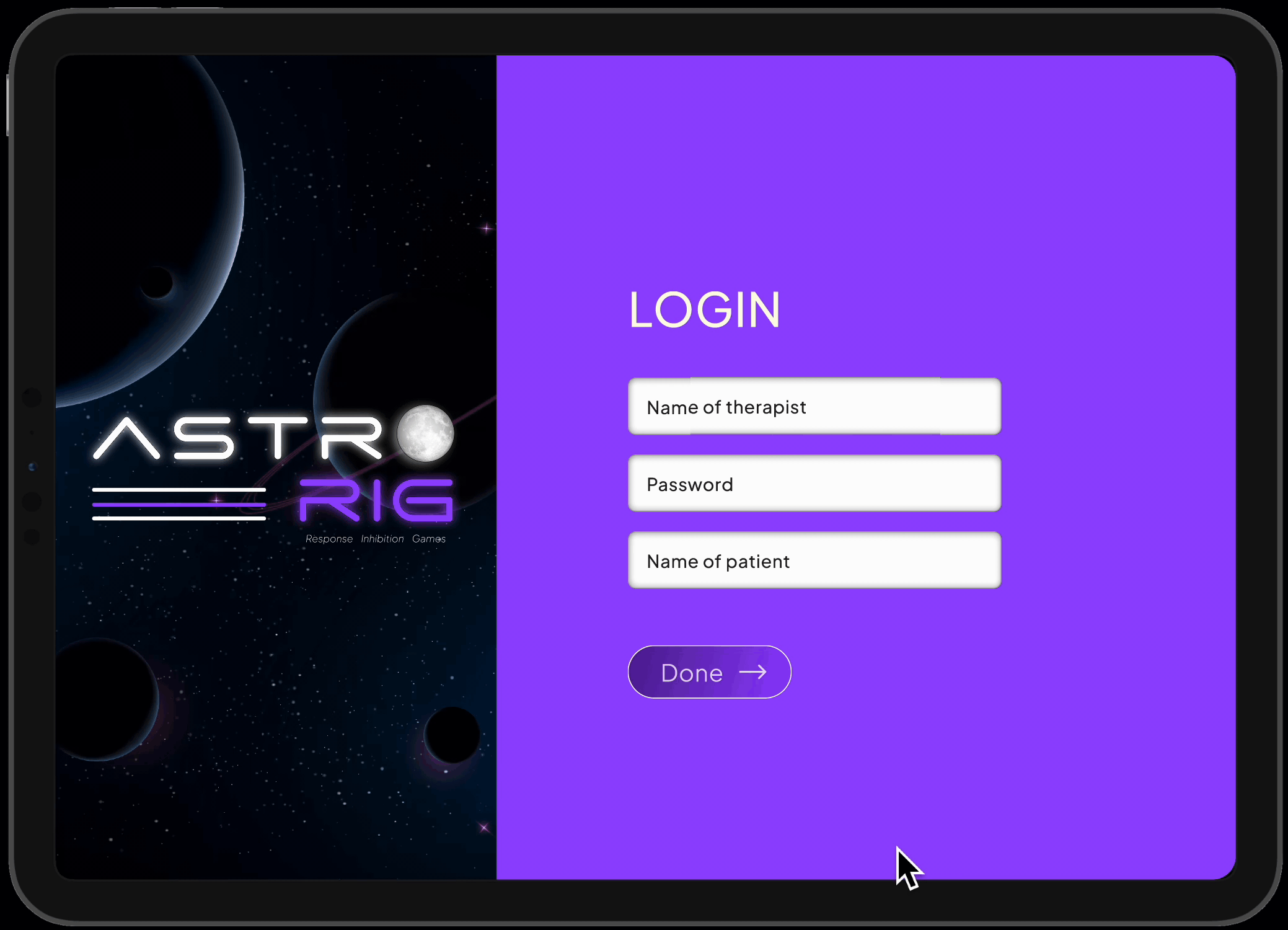
Therapist Login
Here the therapist will login into their account by entering ‘Name’, ‘Password’ and ‘Patient’s Name’. By entering the patient’s name it will allow them to see the previous data of that patient as the therapist might have more than one patient using AstroRIG.
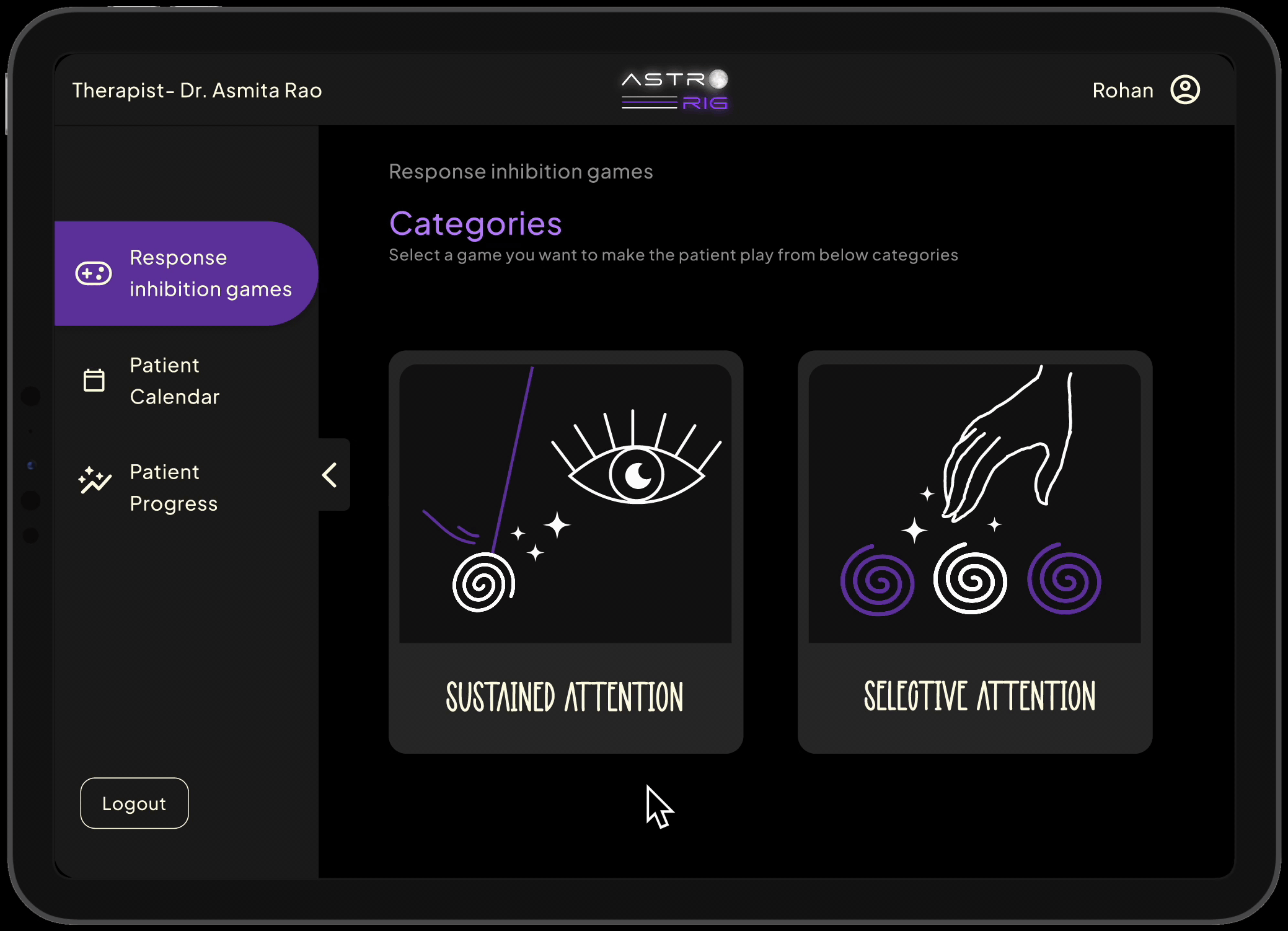
Sidebar - Response Inhibition games
From the below categories, the therapist can select which category game he/she wants the patient to play for today’s session. The therapist being the master can set session duration and game difficulty for the patient.
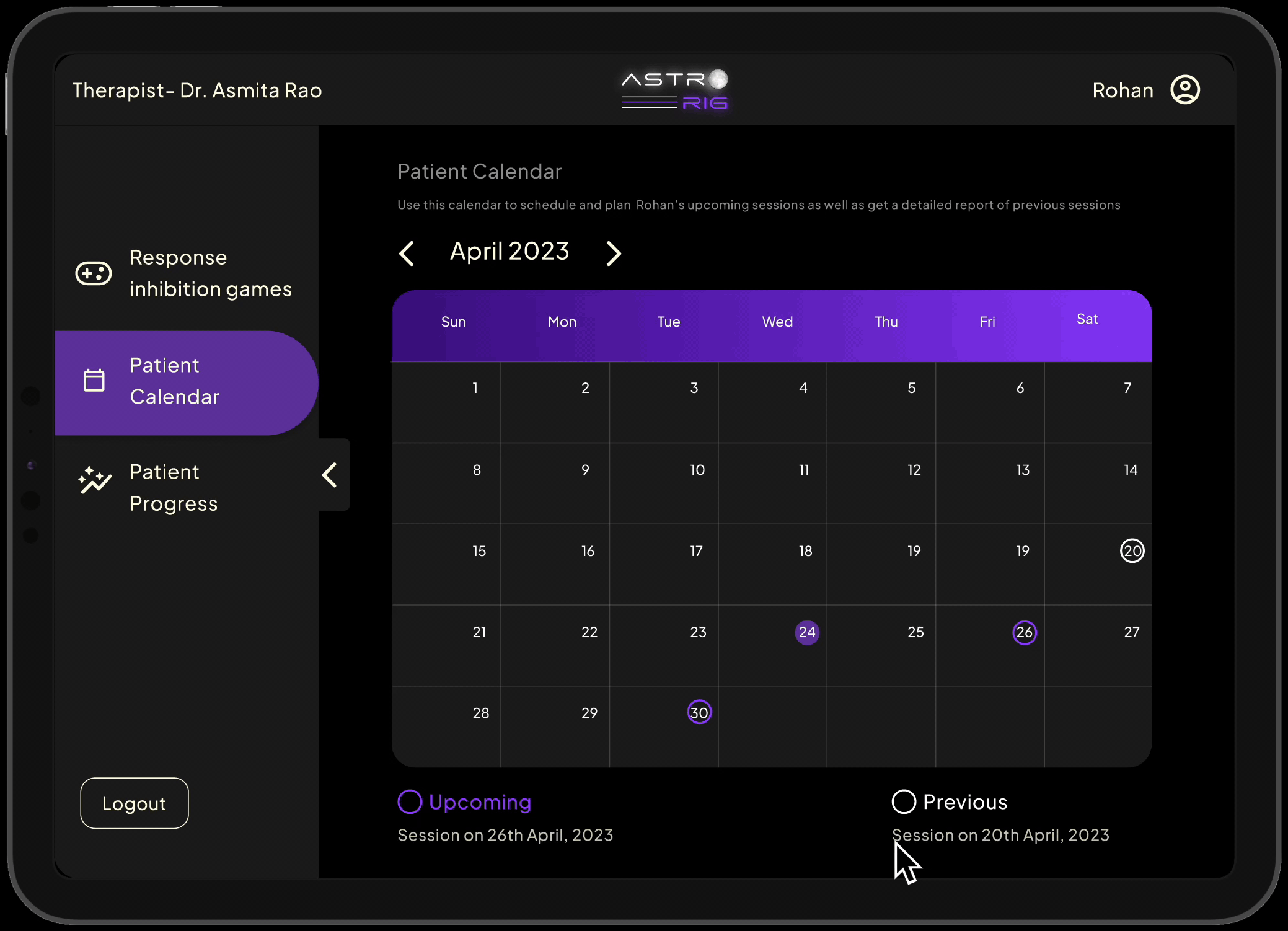
Sidebar - Patient calendar
Therapist can use this calendar to schedule and plan a patient's upcoming sessions as well as get a detailed report of previous sessions.
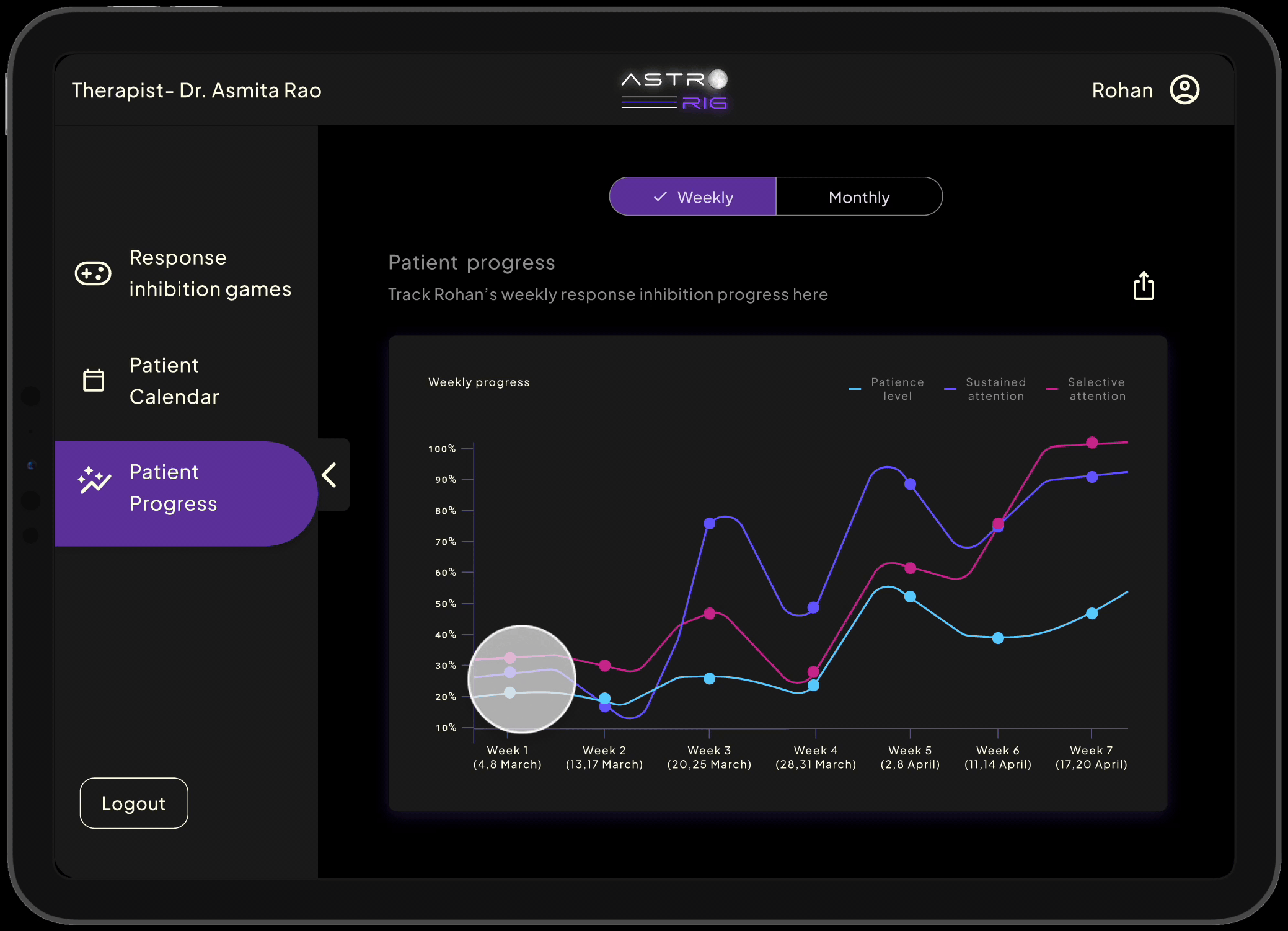
Sidebar - Patient progress
Therapist can keep a track of weekly and monthly progress of their patient in terms of patience level, selective & sustained attention levels.